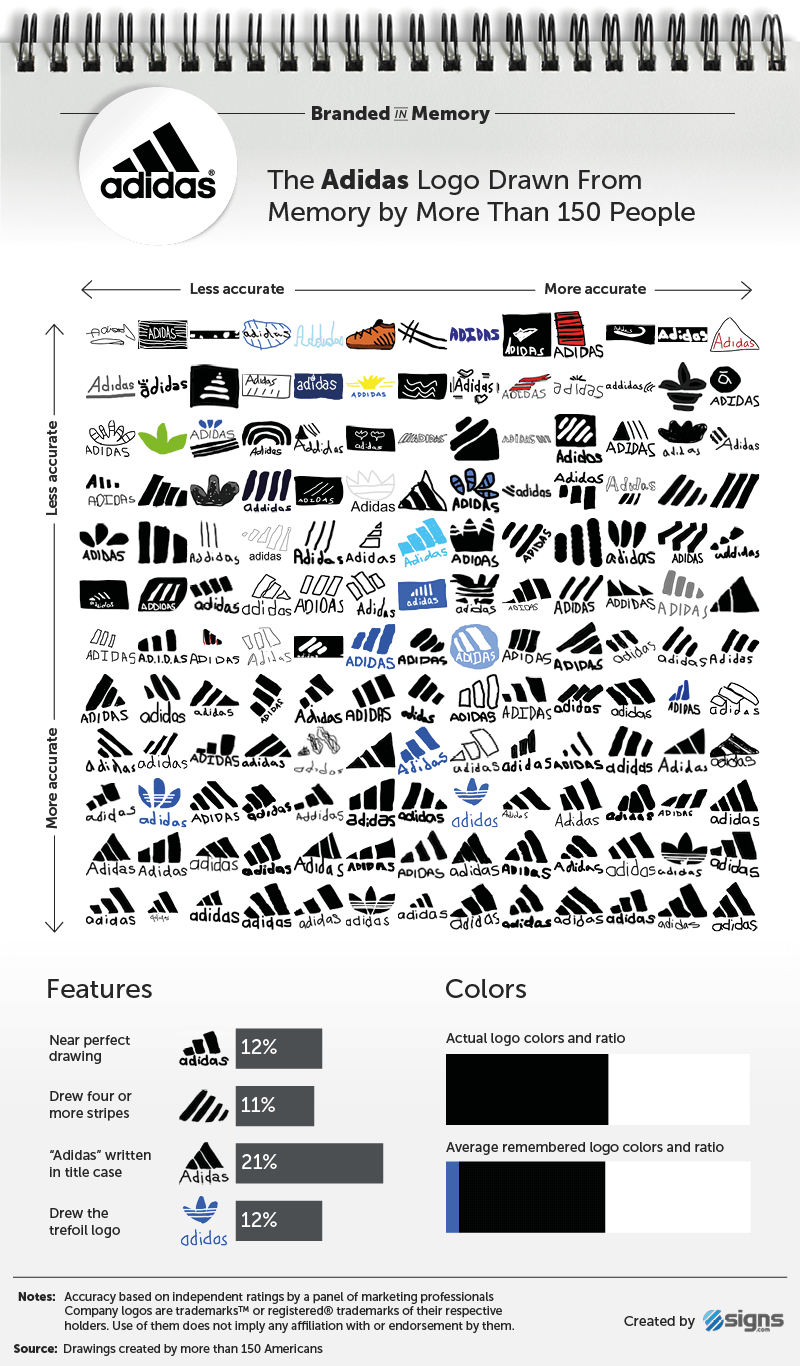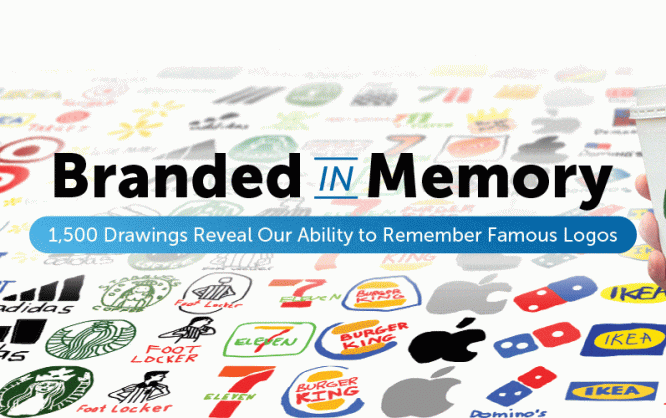If a logo is truly clever is not decided by its pleasant design. It's much more important that potential customers remember the logo.
If a client can't even remember your logo, what kind of branding is that? Brand popularity is an asset that you should strive to have.
Branded in Memory: Study With an Interesting Approach
The sign makers of Signs.com wanted to know the state of brand popularity. They recruited 159 US-American participants for their survey “Branded in Memory”. These participants were asked to draw ten logos of popular brands, among them Apple, Ikea, and Adidas. There was no additional help on that. All they had was their own memory.
[caption id="attachment_103139" align="alignnone" width="800"]

The Adidas logo drawn from memory. (Graphic: Signs.com)[/caption]
Over 50% of Participants Achieved at Least Good Results
As expected, the results were of very varying quality. Although the logos they were asked to draw were present in their daily lives, only 16% created almost perfect drawings. Another 37% submitted good, although not perfect, sketches.
The brands participating in the survey should be satisfied with the result, as a majority of 53% of participants recreated the logos pretty well. Naturally, the accuracy of the logo was weaker the higher the complexity of the logo in question. Still, even with complex logos, most participants used the respective colors correctly.
Logos Need to be Simple and Clear
For logo design, this confirms something that we as good designers already knew. A good logo is very simple, with bold colors, simple lines, and few details. Among the tested logos, only Apple and Starbucks took part in the experiment of forgoing their own name in the logo. Starbucks, however, ended up getting the worst test results in return. Of course, the complexity of the displayed figure is also to blame.
The study also showed that younger participants tend to be able to draw a logo with higher precision than older ones. For a while now, we've known that younger people in general have a much stronger reaction to advertisements than older people.
Thus,
“Branded in Memory” confirms many assumptions that have been considered settled for years. The only new thing here is the perspective that this confirmation was gained from.

 The Adidas logo drawn from memory. (Graphic: Signs.com)[/caption]
The Adidas logo drawn from memory. (Graphic: Signs.com)[/caption]
 The Adidas logo drawn from memory. (Graphic: Signs.com)[/caption]
The Adidas logo drawn from memory. (Graphic: Signs.com)[/caption]
